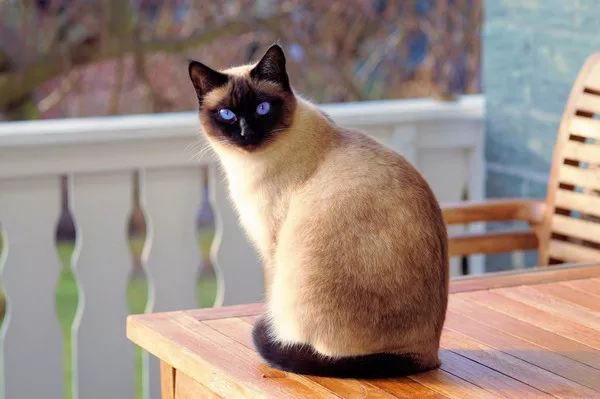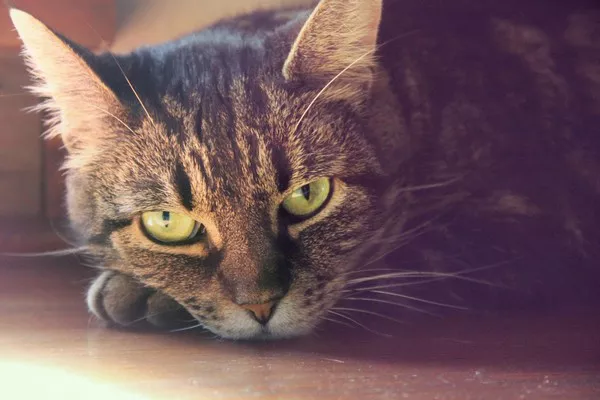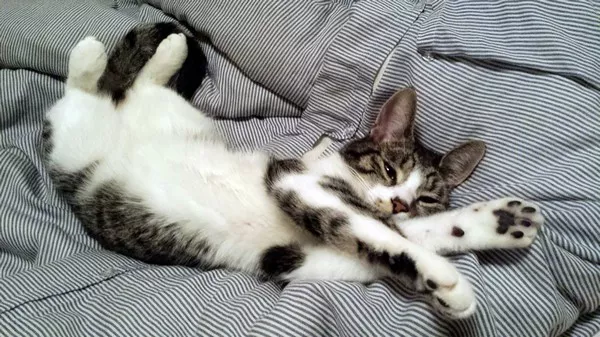Calico cats, with their striking tri-color coats, are adored by cat lovers around the world. Their vibrant fur patterns, which typically include patches of white, black, and orange, make them a subject of fascination and affection. However, one common question that many prospective cat owners and current calico cat owners have is: How much do calico cats shed? Understanding the shedding habits of calico cats can help you manage their grooming needs and maintain a clean, hair-free home. This article delves deeply into the shedding tendencies of calico cats, exploring their fur characteristics, factors influencing shedding, and tips for effective grooming.
The Nature of Calico Cats’ Fur
Calico cats are not a breed in themselves but are rather a color pattern found in many breeds. This distinctive coat pattern, characterized by its patchwork of white, black, and orange fur, can be seen in breeds like the Domestic Shorthair, Persian, Maine Coon, and more. The fur of calico cats can vary significantly depending on their breed, age, and health, leading to different shedding behaviors.
Coat Characteristics
Calico cats can have either short or long fur, depending on their breed. The texture of their fur also varies:
Short-haired calico cats typically have a dense, sleek coat that sheds moderately throughout the year. Their fur is less prone to matting, making them easier to groom.
Long-haired calico cats have a fluffy, luxurious coat that is prone to tangles and matting. This type of fur requires more intensive grooming to prevent hairballs and maintain coat health.
Factors Influencing Shedding in Calico Cats
The amount a calico cat sheds can be influenced by several factors, ranging from genetics to environmental conditions. Here’s a detailed look at these factors:
Genetics
Genetics play a crucial role in determining the coat type and shedding patterns of calico cats. The genes responsible for coat color and texture can also influence how much a cat sheds. For instance, a calico cat with a lineage of long-haired breeds is more likely to have a lush, shedding-prone coat than one with a short-haired background.
Health and Diet
A cat’s health and diet significantly affect its shedding. Cats that are well-nourished with a balanced diet rich in omega-3 and omega-6 fatty acids tend to have healthier skin and fur, which can reduce shedding. Conversely, poor nutrition or underlying health issues like thyroid problems, allergies, or skin infections can lead to excessive shedding.
Seasonal Changes
Like many animals, calico cats experience seasonal shedding. During the spring and fall, cats shed more fur to regulate their body temperature. In the spring, they shed their winter coat, and in the fall, they shed their summer coat. This natural shedding cycle is usually more pronounced in long-haired breeds.
Environmental Factors
Environmental conditions such as temperature, humidity, and exposure to sunlight can also affect shedding. Cats tend to shed more in dry conditions because the skin can become irritated, leading to increased hair loss. Similarly, cats exposed to prolonged sunlight may shed more as their bodies adapt to the changing light conditions.
Stress and Anxiety
Stress and anxiety can also lead to increased shedding in calico cats. Changes in their environment, such as moving to a new home, the introduction of new pets, or even changes in the family routine, can cause them to shed more than usual. Stress-related shedding is often accompanied by other signs of anxiety, such as excessive grooming or changes in behavior.
Managing Shedding in Calico Cats
Managing the shedding of calico cats requires a combination of regular grooming, a healthy diet, and maintaining a stress-free environment. Here are some practical tips to help you manage your calico cat’s shedding effectively:
Regular Grooming
Regular grooming is essential for controlling shedding and keeping your calico cat’s coat healthy. Here’s how to approach grooming:
Brushing: Brush your calico cat’s fur at least once a week. For short-haired cats, a rubber brush or a bristle brush is sufficient. Long-haired cats benefit from daily brushing using a slicker brush or a wide-toothed comb to prevent matting and reduce hairballs.
See Also: Can Chausie Cats Eat Eggs?
Bathing: While not all cats enjoy baths, occasional bathing can help remove loose fur and reduce shedding. Use a cat-specific shampoo to avoid skin irritation.
Proper Nutrition
A well-balanced diet plays a crucial role in maintaining a healthy coat. Ensure your calico cat’s diet includes high-quality protein, essential fatty acids, and vitamins. Omega-3 and omega-6 fatty acids, found in fish oil or certain cat foods, can improve coat health and reduce shedding. Always consult your veterinarian for dietary recommendations tailored to your cat’s specific needs.
Hydration and Health Care
Keep your calico cat hydrated by providing fresh water at all times. Proper hydration supports skin health and reduces shedding. Regular veterinary check-ups are also vital to monitor your cat’s health and address any underlying issues that could be contributing to excessive shedding.
Creating a Stress-Free Environment
Minimize stress for your calico cat by maintaining a consistent routine and providing a quiet, comfortable space. Interactive toys, scratching posts, and cozy beds can help reduce anxiety and prevent stress-related shedding. Consider using pheromone diffusers or calming sprays designed for cats if your cat is particularly anxious.
The Role of Veterinary Care
Regular veterinary care is crucial in managing and understanding your calico cat’s shedding patterns. Your vet can help diagnose any health issues that might be causing excessive shedding and provide guidance on the best grooming practices and diet for your cat. Here’s what you can expect during a vet visit related to shedding:
Health Check-Ups
During routine check-ups, your vet will examine your cat’s skin and coat for signs of parasites, infections, or allergies that could contribute to shedding. They may perform blood tests or skin scrapings to diagnose underlying health issues.
Skin and Coat Health Advice
Your vet can recommend specific shampoos, supplements, or treatments to improve your calico cat’s coat health. They can also provide advice on the best grooming tools and techniques to reduce shedding and prevent skin problems.
Behavioral Consultations
If stress or anxiety is contributing to your calico cat’s shedding, your vet can offer behavioral counseling or recommend medications to help manage anxiety. They may also suggest changes to your cat’s environment or routine to help reduce stress.
Additional Tips for Calico Cat Owners
Beyond the basics of grooming, diet, and veterinary care, here are some additional tips to help you manage your calico cat’s shedding effectively:
Use the Right Grooming Tools
Invest in high-quality grooming tools suitable for your cat’s coat type. For short-haired cats, a deshedding tool or a rubber brush can be effective. For long-haired cats, a slicker brush, de-matting comb, and grooming glove can help keep their fur tangle-free.
Create a Grooming Schedule
Establish a regular grooming schedule to make brushing a routine part of your cat’s care. Short-haired cats may only need weekly brushing, while long-haired cats may benefit from daily sessions. Make grooming sessions enjoyable with treats and praise to reduce any stress associated with grooming.
Monitor Your Cat’s Health
Keep an eye on your cat’s skin and coat condition. Look for signs of dryness, redness, hair loss, or sores, which could indicate a health problem. Early detection of issues can prevent more serious complications and reduce excessive shedding.
Consult with a Professional
If you’re unsure about your cat’s shedding patterns or grooming needs, consider consulting a professional groomer or a feline dermatologist. They can provide expert advice tailored to your calico cat’s specific needs and help you develop a grooming and care plan.
Conclusion
Understanding how much calico cats shed and managing their grooming needs effectively can significantly enhance the well-being of these beautiful animals. By considering the factors that influence shedding, maintaining a healthy diet, providing regular grooming, and ensuring a stress-free environment, you can keep your calico cat’s coat healthy and reduce shedding. Regular veterinary care and professional advice can further support your efforts in managing your cat’s shedding.
Whether you have a short-haired or long-haired calico, embracing these practices will help you enjoy a clean home and a happy, healthy cat. With the right care and attention, your calico cat’s beautiful coat will remain a source of joy and admiration for years to come.

























